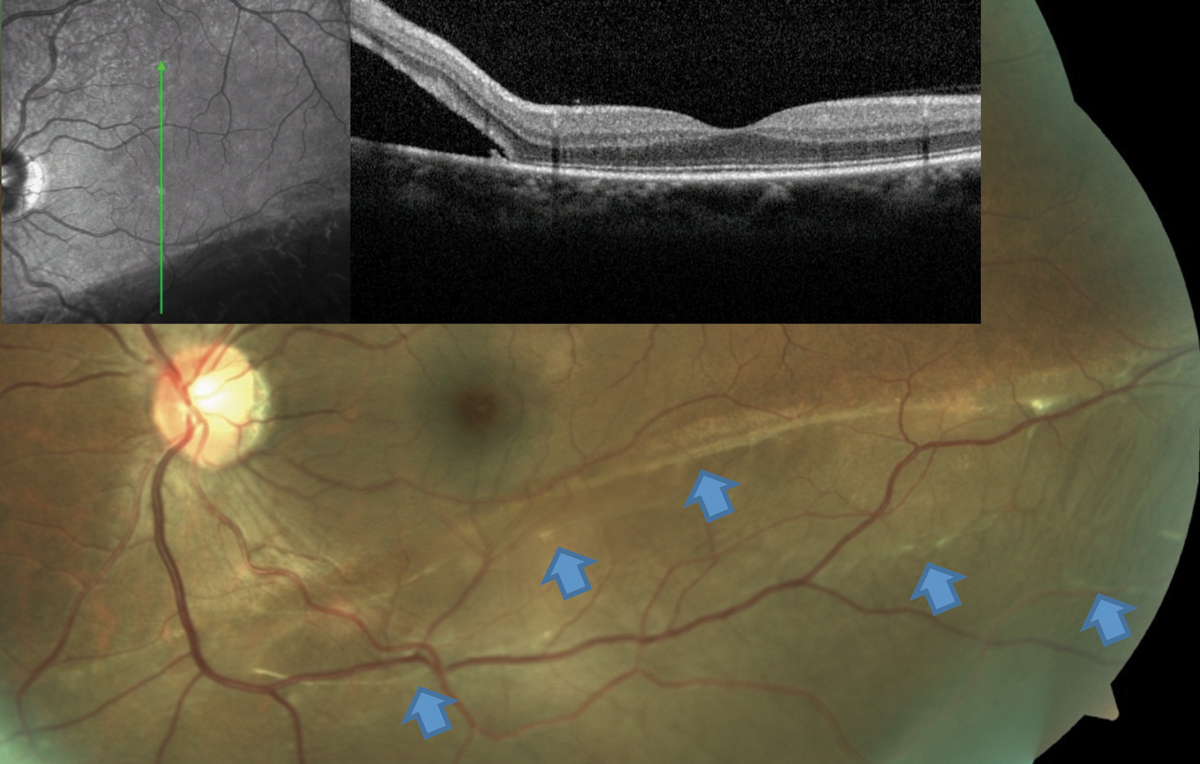 |
|
This study found that metamorphopsia score at one-month postoperatively and the |
A common postoperative complaint of patients who undergo surgery for rhegmatogenous retinal detachment (RRD) is metamorphopsia. Recent studies have suggested that its occurrence may be associated with changes in outer retinal layers as observed on OCT, which could help clinicians to identify patients at greater risk of developing the symptom post-RRD repair. Adding to the literature on this topic, a new study investigated the five-year changes in metamorphopsia severity and the associated risk factors in patients who underwent pars plana vitrectomy for macula-involved RRD.
The study involved 21 eyes from 21 patients selected under stringent inclusion criteria to avoid confounding variables from other types of retinal detachments or ocular conditions. M-charts were used to quantify metamorphopsia severity, and spectral-domain OCT was used to evaluate the outer retina's morphology over five years.
More than half of patients (11) had metamorphopsia at five years postoperatively. The researchers observed a significant initial improvement in metamorphopsia scores, which plateaued after the first year and remained unchanged through the five-year follow-up period.
Patients with a continuous interdigitation zone (IZ) and ellipsoid zone exhibited notably lower scores compared to those with a disrupted IZ, suggesting that the integrity of the IZ could be an important prognostic factor in long-term visual outcomes post-vitrectomy for RRD. Additionally, the multiple regression analysis found that metamorphopsia score at five years was significantly associated with the metamorphopsia score at one month post-op and the continuous IZ; therefore, early metamorphopsia appeared to be a poor prognostic marker for long-term functional deficits.
In their paper on the study, published in Retina, the researchers explained that these findings suggest “a higher metamorphopsia score at one month postoperatively indicates the possibility of considerable postoperative metamorphopsia persistence.” Additionally, “continuous IZ and microstructural changes, such as outer retinal folds by en face OCT, may provide clues to predict the postoperative duration of the remaining metamorphopsia or its improvement.”
Due to the limited sample size of this study, larger investigations are warranted to interpret the clinical significance and generalizability of these findings.
Okuda T, Higashide T, Sugiyama K. Five-year changes in metamorphopsia and the association of outer retinal layers after vitrectomy for rhegmatogenous retinal detachment involving the macula. Retina. July 5, 2024. [Epub ahead of print]. |

